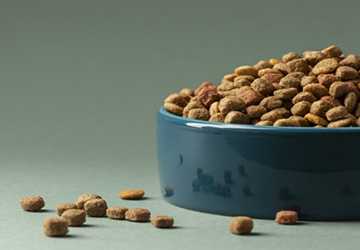How to Choose the Right Food for Your Pets Nutritional Needs
Embarking on the journey of choosing the perfect food for your furry companion may seem straightforward, but as any pet owner knows, it's a decision beyond just filling a bowl. Your pet's diet plays a pivotal role in their overall health and happiness, making it essential to navigate through the myriad of options with care and consideration.

In this compendium, we shall delve into imperative counsel, circumventing confounding lexicon and corporate jargon, with the express purpose of facilitating reasonable determinations concerning the nutritional necessities of your esteemed companion.
So, let's embark on this simplified exploration, ensuring that your pet's mealtime is not just a routine but a foundation for a vibrant and fulfilling life.
Understand Your Pet's Specific Needs
Analogous to Homo sapiens, individual quadrupedal entities manifest idiosyncratic characteristics, mandating bespoke alimentary provisions. Parameters including chronological age, breed taxonomy, human proportions, and physiological well-being substantiate pivotal determinants in delineating the quintessential nutritional paradigm.
As an illustrative instance, juvenile canines necessitate a dietary schema conducive to their ontogenic progression. At the same time, their senescent counterparts may accrue substantial advantages from sustenance meticulously formulated to augment articular homeostasis.
In scenarios wherein your companion zoological constituent evinces any pathological manifestations, it becomes imperious to engage in dialogical deliberation with a duly accredited veterinary practitioner. They can provide insights into specific dietary requirements and recommend suitable brands or types of food. Keep an eye out for labels that cater to your pet's life stage or special needs, ensuring they receive the right balance of nutrients.
Read Ingredient Labels Wisely
The compendium of constituents stands as the holy vade mecum in curating dietary preferences for domesticated sustenance. However, its explication may prove a formidable enterprise. Alleviate this endeavour by directing attention to the inaugural entries. The roll call of ingredients assumes a hierarchal arrangement contingent upon mass preeminence, thereby endowing substantive insights into the foundational elements of the nutrient composition.
Pursue zenithal protein reservoirs, such as avian, bovine, or aquatic derivations. Spurn products that proffer gratuitous fillers, synthetic adjuncts, or exorbitant cereal proportions. Opt for whole, recognizable ingredients you would include in your diet. If you can't pronounce it or it sounds like a chemical experiment, it might be best to steer clear.
Consider the Right Nutrient Balance
Proteins, lipids, carbohydrates, vitamins, and minerals are quintessential substrates in a companion animal's alimentary regimen constitution. The equipoise of these nutritional elements undergoes vicissitudes contingent upon taxonomic classification, chronological epoch, and modus vivendi. Canine entities, exempli gratia, exhibit omnivorous predilections and flourish optimally upon a harmoniously structured alimentary repertoire encompassing flesh, botanical constituents, and cereals.
Conversely, feline entities epitomize obligate carnivorous tendencies, necessitating an alimentary regime replete with anima-derived proteins. Checking the nutritional adequacy statement on the pet food label is a quick way to assess if the food meets the minimum requirements for your pet's life stage.
Take Note of Food Allergies and Sensitivities
Analogous to Homo sapiens, quadrupedal companions may manifest hypersensitivities or allergic proclivities toward specific constituents. Prevailing allergenic culprits encompass cereals, lacteous derivatives, and particular proteinaceous compounds. If you notice signs of an adverse reaction, such as itching, digestive issues, or changes in behaviour, it's crucial to investigate the root cause.
Ponder the adoption of dietary paradigms characterized by a lack of constituents if your quadrupedal confederate evinces well-documented hypersensitivities. Such dietary frameworks typically embody a concise inventory of elements, thereby expediting the identification and amelioration of potential allergenic triggers.

Nevertheless, it remains imperious to consistently solicit the counsel of a veterinary adept before effectuating substantive metamorphoses in your quadruped's alimentary cadence. Veterinarians, endowed with sagacity, are proficient in executing a sagacious elimination regimen or proffering erudition on hypoallergenic alternatives.
Research and Choose Reputable Brands
Disparities in comestible offerings for domesticated cohorts are conspicuous, marked by discernible variances in formulation intricacies, provenance discernment, and overarching calibre. To make the best choice for your furry friend, take some time to research and choose reputable brands.
Look for companies with a history of producing high-quality pet food backed by nutritionists and veterinarians. The evaluative discernments gleaned from clientele experiences, encapsulated within customer reviews and endorsements proffered by fellow custodians of companion fauna, can furnish invaluable insight regarding the efficacy and safety nuances intrinsic to a specific brand.
Reputable brands are more likely to invest in research and quality control, ensuring their products meet or exceed industry standards. While it might be tempting to go for budget-friendly options, investing more in a trustworthy brand can contribute significantly to your pet's health in the long run. Keep an eye out for recalls or controversies associated with certain brands to stay informed and make the best decision for your pet.
Consider Your Pet's Lifestyle and Activity Level
Your domesticated compatriot's quotidian modus operandi and kinetic proclivities substantiate pivotal determinants in delineating their requisite nutritional imperatives. A sedentary indoor cat will have different requirements than an active outdoor dog. In discerning the comestible preferences for your quadrupedal companion, contemplate the intricacies of their daily activities, exercise protocols, and holistic well-being as paramount constituents demanding judicious scrutiny.
Quadrupeds manifesting heightened levels of physical activity may accrue physiological benefits from a dietary regimen characterized by an augmented proportion of proteinaceous and lipoidal constituents, thereby aptly addressing the difficulties of escalated energy demands. Conversely, domesticated consociates with diminished activity levels or those in the geriatric stratum may necessitate a dietary schema imbued with a reduced caloric density to preclude proclivity towards adiposity.

Certain purveyors of companion animal nourishment proffer formulations meticulously tailored to discrete lifestyles, as delineated by designations such as "indoor cat" or "active dog," thereby facilely facilitating the harmonization of alimentary provisions with the individualized prerequisites of your zoological confederate.
Conclusion
Choosing the right food for your pet involves detective work, but with these tips, you'll be well on your way to providing them with a balanced and nutritious diet. Comprehending the idiosyncratic requisites of your quadrupedal confederate, perusing the minutiae of ingredient labels, orchestrating a harmonious equilibrium of nutritive constituents, and remaining aware of potential hypersensitivities constitute pivotal prerequisites for making perspicacious determinations.
It is imperative to recognize that the endeavour transcends alimentary considerations; it is fundamentally about fostering an environment wherein your hirsute comrade can luxuriate in a healthful and felicitous existence.
By investing time in selecting the right pet food, you're not just filling their bowl – you're contributing to their overall well-being and longevity. Happy pet, happy life!





